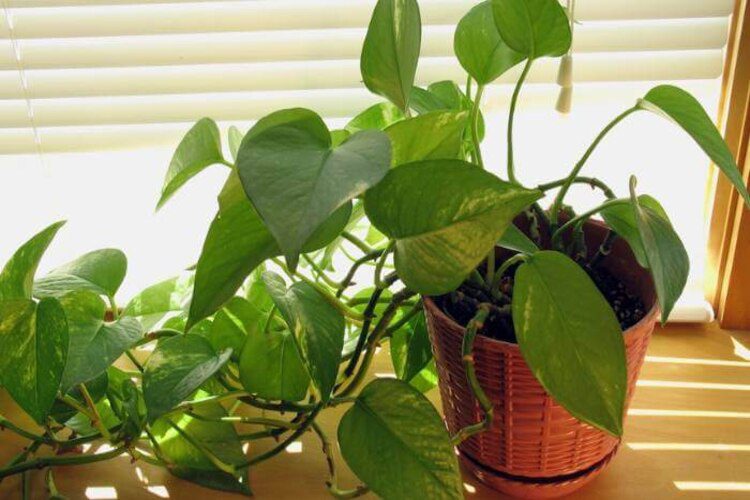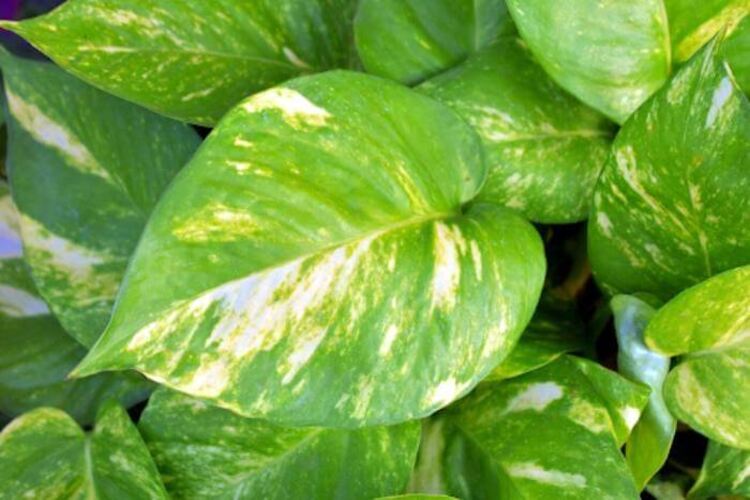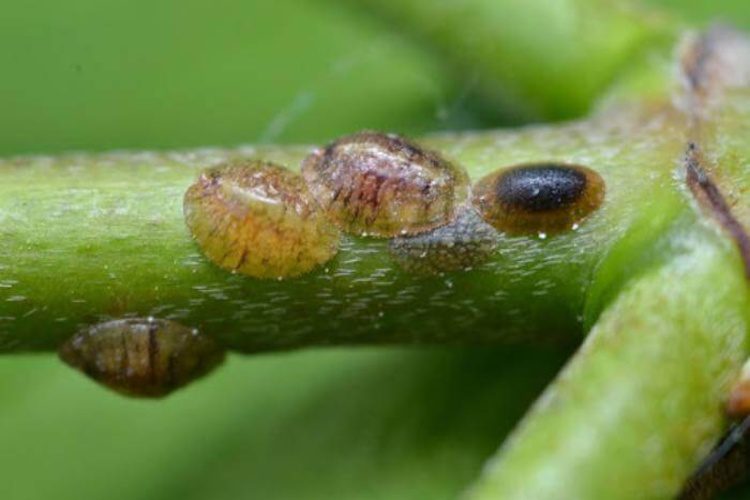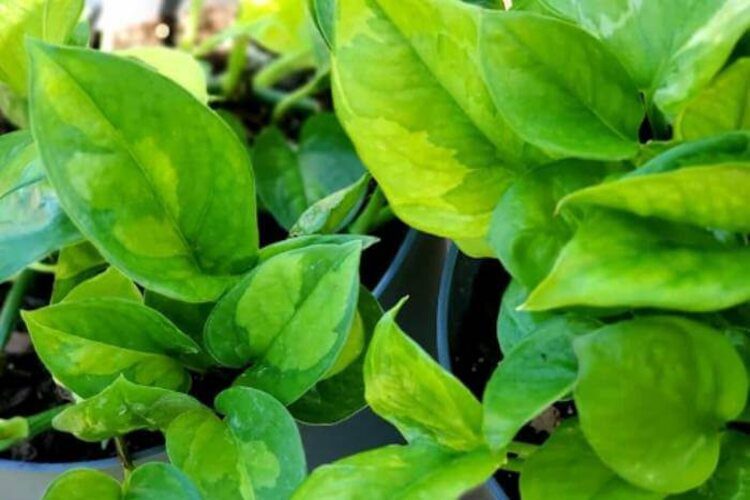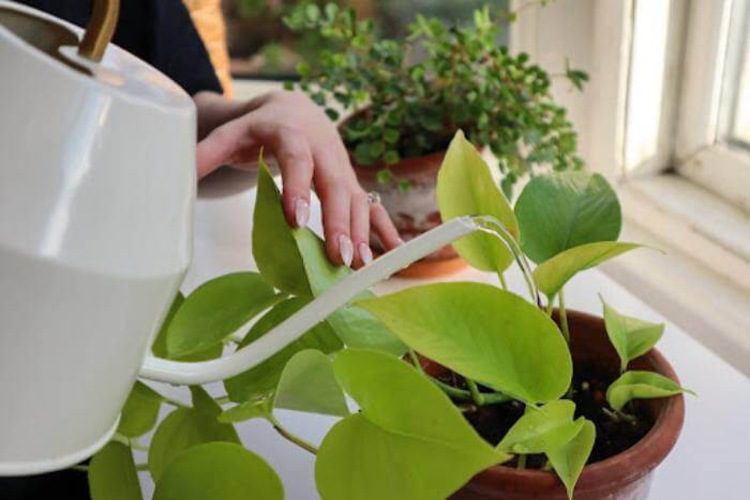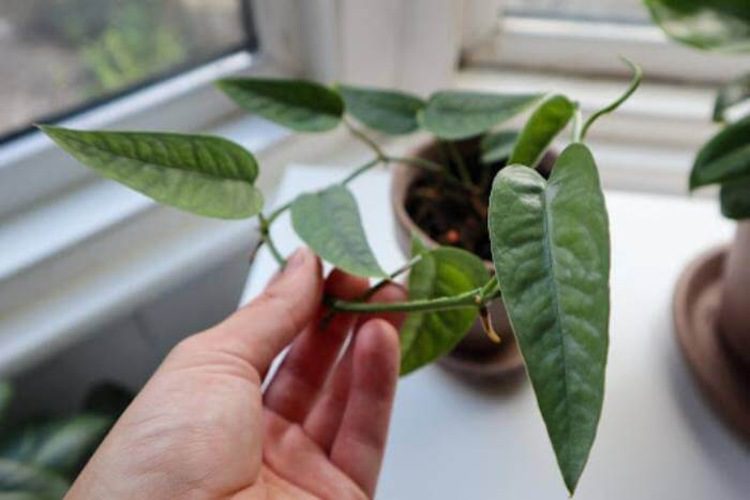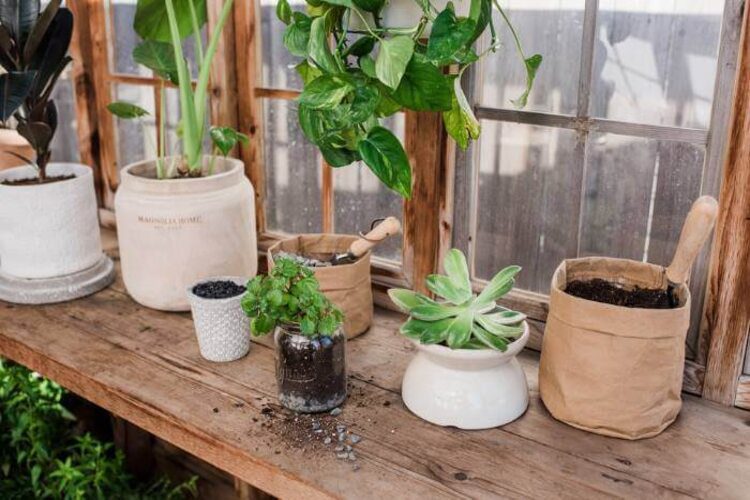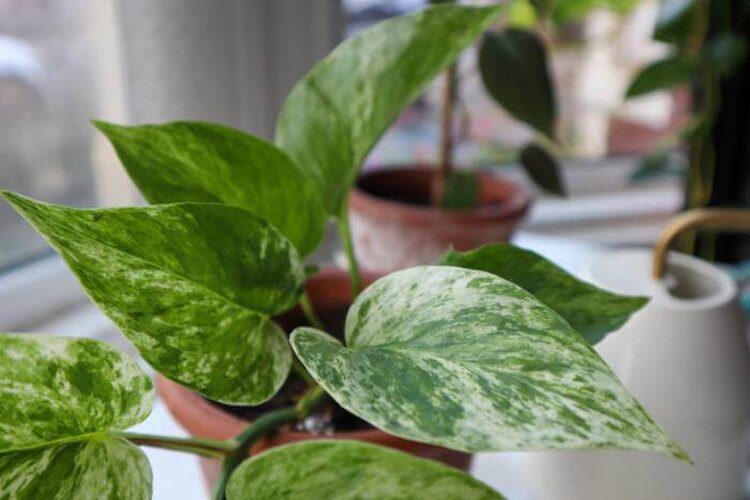Manjula Pothos Care: Stunning Plants For Beginners
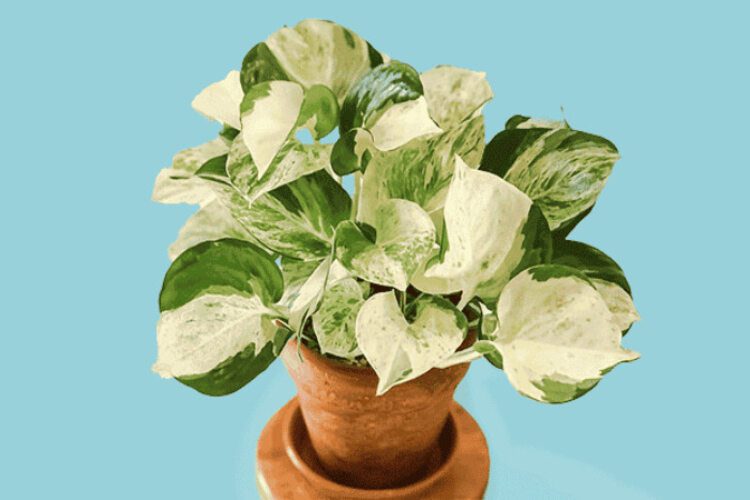
If you’re looking for a plant that is both beautiful and enduring, then the Manjula pothos might be just what your garden needs! This cultivar features large heart-shaped leaves with stunning white, green, and cream variegation. This is a rare and beautiful variety that is difficult to come by. If you want this plant to be beautiful in your house, it’s probably going to take some effort.
You might have better luck finding them at botanical gardens or contacting collectors who can help you acquire one for your collection.
| Scientific Name | Epipremnum aureum ‘HANSOTI14’ |
| Common Name | Manjula pothos, happy leaf pothos, and jewel pothos |
| Family | Araceae |
| Origin | India |
| Plant Type | Vine, foliage, large |
| Bloom Time | Spring |
| Flower Color | There are no flowers when grown indoors |
| Soil | Loamy, moist but well-drained soil pH: Acidic |
| Water | Moderate, even moisture |
| Temperature | 50-95°F (10-35°C) |
| Sunlight | Partial |
| Toxicity | Toxic to young children and pets |
About Manjula Pothos
Manjula Pothos is a different type of Epipremnum that originated in India and often gets confused with its Floridian counterparts like Pearls and Jade Pothos. Pothos is considered one of the easiest indoor plants you could ever grow, making this vine an excellent choice for beginners. The Manjula Pothos is called the ‘Happy Leaf’ with large leaves that are not just green but fused in splashes, swirls, and dapples of white.
Living in an area where there is a warm enough climate will help these vibrant vines thrive at their best and bring some life and color into your outdoor spaces. They also make great indoor decorations. They also provide a health benefit for any office or living area because they can remove pollutants from the atmosphere and clean up the air. And of course, like the other brothers in the Epipremnum aureum family, Manjula Pothos is easy to care for.
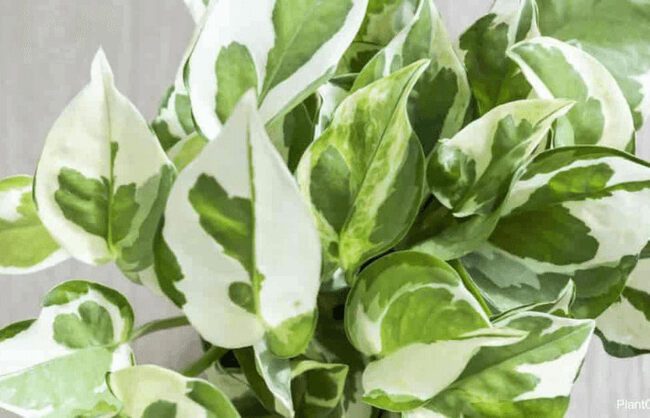
Manjula Pothos Care
Here are some things to keep your Manjula Pothos happy and healthy:
Light
This kind of Pothos does best in bright, indirect light. Too much direct sunlight can cause the leaves to scorch, so it’s best to place them near a window that receives morning or afternoon sun. If you don’t have a spot that gets a lot of natural light, you can also grow the plants under fluorescent light.
Soil
When it comes to soil, the plant is not particularly picky. They will do well in most types of soil but prefer rich, organic soil. You can create your potting soil mix by combining one part potting soil, one part compost, and one part vermiculite or perlite. Or you can purchase a pre-made potting mix at your local garden center. If you are growing in containers, make sure the pots have drainage holes to allow excess water to escape.
Watering
The soil should be damp but not wet. The pot’s top 2-3 inches need to dry out between waterings. If you’re unsure whether the soil is dry, you can stick a finger in it, and if it still feels moist, you don’t need to water it yet. Manjula Pothos are some of the toughest plants in your houseplant collection, so it’s not surprising they can withstand a little neglect. If you forget to water this lovable plant every once in a while, its roots will still thrive and be happy!
Read more:
Fertilizer
When it comes to fertilizing, there are a few key things to keep in mind. First, it’s important to use a balanced houseplant fertilizer that has nitrogen, phosphorus, and potassium in a ratio of either 10-10-10 or 20-20-20. Secondly, you’ll want to make sure to fertilize your plants only when they are actively growing, typically during the spring and summer months. Finally, be sure to follow the instructions on the fertilizer packaging carefully, as over-fertilizing can be harmful to your plants.
Temperature
The ideal temperature range for these plants is between 64 and 84°F (18 and 29 °C), and they can withstand temperatures from 43 °F (6°C) to 104 °F (40 °C). But your Pothos may be experiencing some problems if the temperature isn’t ideal. For example, dried upper leaves, slow growth, or burning leaves.
Humidity
Manjula pothos thrives in medium to high humidity. It’s best when the air has 50% or more water vapor, but your home may not always be in this type of environment. What is the best way to tell if your humidity is too high or too low? A hygrometer. It will show you how much water vapor there actually is, and you can make the necessary adjustments.
You can use methods from the pebble tray. You will fill a container halfway with water, just above and below the pebbles’ tops, so that they are surrounded by moisture-filled air. This will help them remain moist and humid. Use either misting or humidifiers to take care of the humidity.
Repotting
There will be times when you need to repot these plants as they grow to larger sizes. The pot you choose should be large enough so that the plant can grow comfortably. You’ll also want to make sure that the pot has a drainage hole so that water can escape and not stay in the pot and rot the roots.
Pests and diseases
Manjula Pothos is the poster child for resilience, but still, it might encounter the problems of infestation. Some of the common pests, including mealy bugs, thrips fungus, gnats, spider mites, and white flies, might attack and affect the plants badly by nestling among the pothos leaves.
When you notice the first signs of an infestation on your plant, immediately quarantine it and use organic insecticides like neem oil solutions or soap. Be sure to follow label directions when applying these products so as not to damage other plants nearby.
Manjula Pothos Propagation
Propagation is an easy process that anyone can grasp. All you need is a little patience and some basic supplies. First, cutting a stem or extracting a cutting from a healthy plant is the first step. Make sure to use sharp, clean shears or scissors when cutting the stem. Cut the stem at an angle, about two inches below a leaf node. Leaf nodes are where new leaves will grow, so cutting just below one will give your new plant the best chance of success. After cutting the stem, remove any bottom-most leaves. These leaves will not be able to take in water and will only rot or be buried, which can lead to fungal problems for your new plant.
Once the leaves are removed, dip the cut end of the stem into the rooting hormone or medium to help encourage the roots to grow. Next, plant the stem in a pot filled with moist soil. Be sure to use a pot that has drainage holes in the bottom, as Manjula Pothos does not like to sit in wet conditions. Place the pot in a bright location but out of direct sunlight. Water the soil lightly, just enough to keep it moist. Within a few weeks, you should see new growth emerging from the soil. Once the plant has established itself, you can begin to water it frequently.
When the weather warms up in the spring, you can move your pothos plant outdoors. Just be sure to acclimatize it slowly to the change in conditions, as sudden changes can shock the plant. With a little time and patience, you can easily propagate Manjula Pothos, N’Joy Pothos, and Hawaiian Pothos and have new plants to enjoy indoors or out. Both N’Joy Pothos and Hawaiian Pothos can be propagated in the same way as Manjula Pothos. However, they may take a bit longer to root.
Toxicity
Manjula plants can be toxic. They can cause nausea, vomiting, and stomach pains in humans who ingest them, with some rare cases resulting in painful sores inside your mouth.
It can also affect your pets. To keep your pets safe, you can try placing some orange or lemon peel into the Manjula pot. The citrus smell will deter your pets. Make sure the plants don’t come into contact with animals or children, and always wash your hands and body thoroughly after tending them.
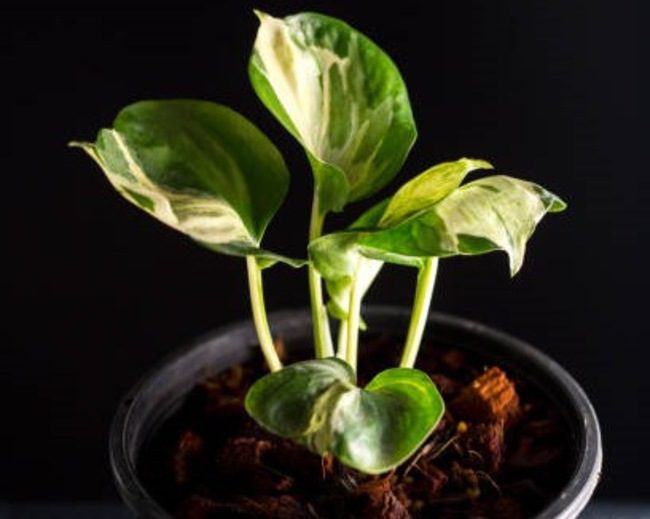
Common Problems
Being a low-maintenance plant, it generally doesn’t bring you any problems, however, if not given good care, issues that affect their growth would arise. You should have some insight into this.
Yellow leaves
There are a few reasons why your Manjula pothos might be showing yellow leaves. First, it could indicate that the plant has been diseased or fallen victim to root rot and needs treatment immediately.
Lack of light is probably the most common problem; most plants need at least 4-6 hours of indirect sunlight per day. If you can’t figure out the problem or if your plant doesn’t seem to be improving, you can always take a cutting and start a new one. That way, you’ll at least have more experience caring for Manjula Pothos.
Brown leaves
This can be caused by either overwatering or underwatering, as well as poor air circulation around the plant. Make sure your pot has drainage holes so excess water can escape, and keep it in a bright spot where it won’t get too much or too little direct sunlight.
If you’re having trouble getting your Manjula Pothos to grow tall and lanky, it might not be getting enough nitrogen. Add some organic fertilizer to the soil every few weeks to give it a boost. Brown leaves can also be a sign of pests or diseases attacking your plant. If you see any bugs on the leaves, try removing them manually or using insecticide.
If the problem persists, you might need to get rid of the plant to prevent the pests from spreading. Finally, don’t forget that Manjula Pothos are poisonous, so keep them away from pets and small children who might be tempted to take a nibble.
Read more: Hawaiian Pothos Care: The Ultimate Guide For This Plant
Conclusion
Manjula Pothos is a popular houseplant that can adapt to various living conditions. Maintaining a temperature for your pothos plant that is perfect and not too hot or cold will require the use of an air conditioner during high temperatures, but if you want it to be cool enough, then consider using heaters instead. To give your Manjula Pothos the best chance of survival, feed it only during growth season.
FAQs
Related posts:


